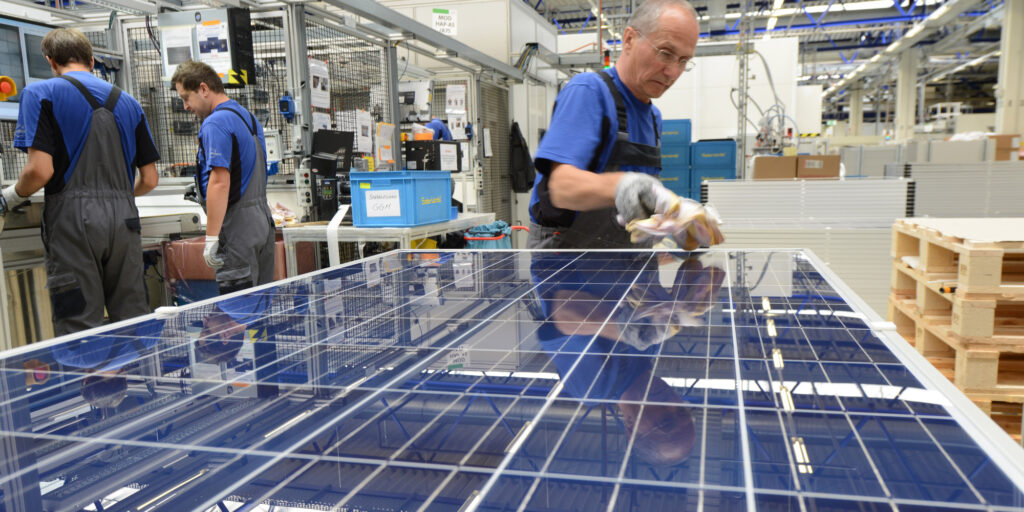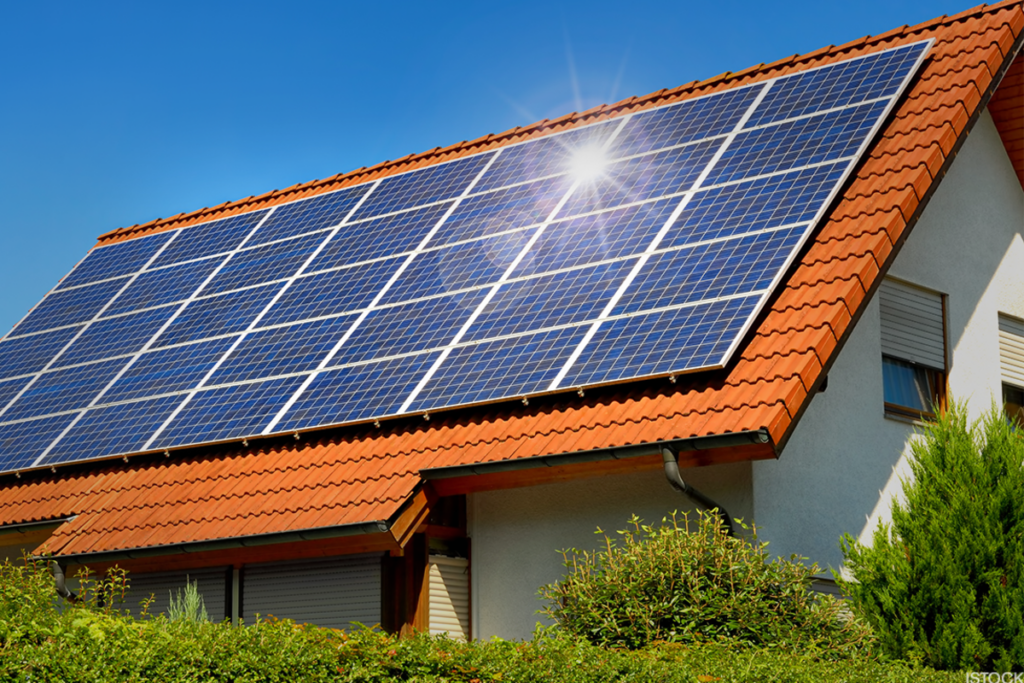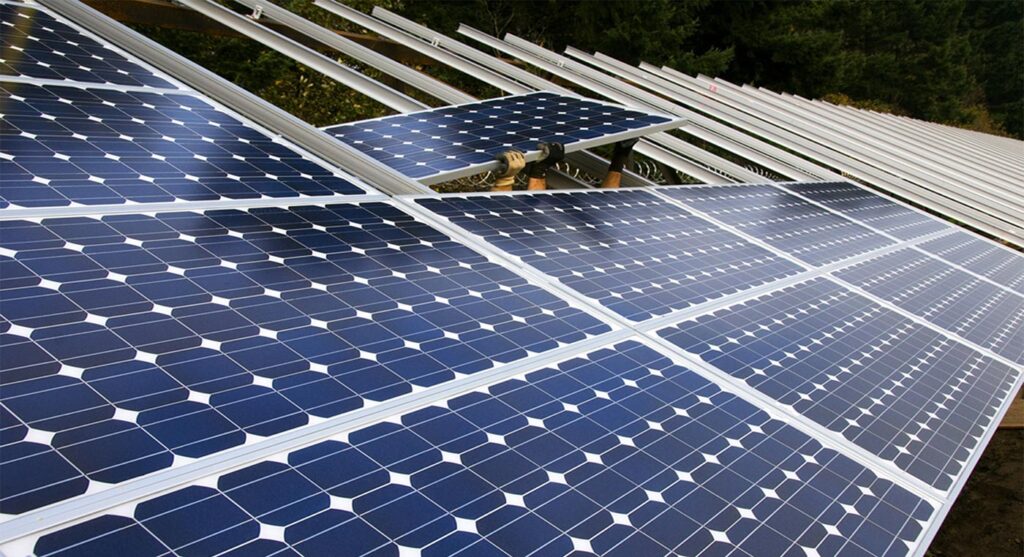If you have ever wondered, what are solar panels made of, you will get all details about it in the following article. We want to focus on describing the composition of the solar thermal collector so that you better understand its operation.
A solar collector is made up of a series of elements that give it specific and necessary characteristics for its operation. Let us discuss this in detail.
Contents
What are Solar Panels Made of? And Why They’re Taking Over the World
Depending on each manufacturer, the panels may vary in the material used or their properties. Because different treatments will be applied, seeking to enhance some particular characteristics, be it resistance, thermal insulation, or another. Here are the details of what are solar panels made of?
Cover
Special glass element, with a treatment for high temperatures and temperatures and which also has a treatment that does two functions on its inner face.
The first is to allow the solar radiation to pass inwards so that it heats the interior of the solar panel, and the second is not to let out the radiation reflected by the metal panel.
Thus, producing the greenhouse effect inside the collector, which is why considerably increases its performance. The cover also serves to reduce conduction and convection losses.
Some collectors have several transparent covers that further reduce losses, but greatly increase the cost of the equipment.
Absorber
It is the element where the transformation of the energy that arrives by radiation in thermal energy that absorbs the fluid-heat-carrier occurs.
It generally consists of copper tubes or two plates made of metal or plastic material, which are exposed to solar radiation and through which the heat transfer fluid passes. This liquid is known as Glycol.
Absorber Treatment
Depending on the type of treatment, the absorbers can be presented with special black paints or with selective absorbent treatment.
Insulation
To reduce the thermal losses of the collector, it is convenient to isolate the areas not exposed most of the day to solar radiation. These are the sides and the back of the solar collector.
In these areas, good thermal insulation contributes to reducing the factor of thermal losses of the collector, consequently increasing its performance.
Also, some manufacturers incorporate a thermo-reflective sheet to help the heat stay inside the sensor itself, increasing the greenhouse effect.
Cover Gasket
It is an element of elastic material whose function is to ensure the tightness of the connection between cover and casing. It will in turn serve to absorb the differences in the expansions between the housing and the cover so that there is no breakage in any element of the sensor.
Housing
It is the element that serves to form the collector, fixing the cover. Generally manufacturing from Aluminum to Steel. It contains and protects the other components of the collector and supports the anchors.
Particular attention will have to be paid to issues of corrosion and deterioration due to solar radiation.
What Components do Photovoltaic Solar Panels Have?
Solar photovoltaic installations transform sunlight by generating electricity, which we use in our home. Or that when it is leftover you can store it in a battery or pour it into the network so that other users can use it.
Like a thermal panel, photovoltaic solar panels are made up of various components, each with a specific function. We must bear in mind that each manufacturer, according to their Research and Development work.
Sometimes varies this configuration by changing some material. To enhance the final performance of the solar panel, that performs a special treatment on some component or adds another component, to enhance the final performance of the solar panel:
Glass Cover
Tempered and anti-reflective glass with light transmission qualities of more than 90%, resistant to abrasion and impacts.
This covering is important because it significantly reduces the reflection so that more light enters the solar cell, which translates into a greater conversion into electricity.
Panel manufacturers are increasingly opting for anti-reflective coatings and ensure an optimal balance between optical performance, strength, and cost.
Plexiglass Sheets
These are much more flexible than tempered glass but considered “organic glass” because they are effectively sheets of glass polymerized with resins and acrylic compounds.
It has mechanical properties of great stability to atmospheric and chemical agents.
Aluminum or Stainless-Steel Frame
Whose function is to ensure the integrity of the set and to be like the skeleton that unites all the pieces.
Solar Cells
They are the heart of the same module, placed in rows and columns, followed by one another in groups per panel, the quantity of which varies widely by nature and by the energy objective to be achieved, from a simple 1.5V battery charger to mega productions both independently and as part of conventional electrical networks.
They are glass “wafers”, varying their shape and size. Commercially the most widely used at the moment are the 3″ x 6″ and the 6″ x 6″ (inches).
Their thickness is less than 1 millimeter and fragile resistance to shocks. And made with an electrically conductive material that abounds in the Earth’s crust known as silicon.
Base Plate
They consist of a simple box-shaped structure, the size of which varies according to the number and size of cells. On this plate rest, the cells glued perfectly with silicone, which in turn is a perfect sealant to prevent the ingress of water or dust particles.
Terminal Box
A small box secured at the back of the panel has output terminals for connecting the panel with other panels forming a battery, with the regulator or direct consumption.
It is used for “continuous” electric current produced by the panel, which is insured and resistant to the weather.
Protection Diodes
They are the protectors of the panels because they ensure that the flow of electric current is directed only in one direction, that is to say, to prevent electricity from returning to the solar cells or panels themselves.
Top Solar Panel Manufacturers

You must know the market of the main manufacturers of solar panels which are mostly dominated by the Chinese.
However, there are other companies from countries such as Canada and the United States that bring excellent advances and experience for their clients. Below we list the top manufacturing companies from the USA and Canada:
1. Canadian Solar
This is a Canadian company founded in 2001. It is considered as one of the largest and most important suppliers of energy worldwide in at least 20 countries on 6 continents.
They manufacture solar modules and photovoltaic solar energy systems, so its Great innovative design highlights the cold modules based on a low internal intensity technology and available in both polyvinyl chloride and monocrystalline.
2. First Solar
This is an American company and manufacturer of photovoltaic modules that have products in the United States, Germany, and Malaysia, supply different solar power plants worldwide.
In it, they have a very particular and proprietary First Solar technology in which they use a semiconductor layer of Cadmium to produce electricity through the photovoltaic effect.
That is why it produces thin-layer photovoltaic modules and comprehensive solutions for the systems. This company is one of the first to carry out a program for collecting and recycling solar panels, which is why it is usually mostly used for solar farms.
3. Heliene
This is a North American company. This company offers solar photovoltaic energies and they are playing a significant role in the field of energy in North America.
They are manufacturing efficient and high-quality photovoltaic modules.
4. Itek Energy
Itek Energy is Washington based company. Since 2009, they are manufacturing high-quality, efficient, and powerful solar photovoltaic modules.
Their solar glasses are anti-glare incorporated with prismatic sub-surface texture which is designed especially for the best performance in both direct light and diffuse conditions.
5. Jinko Solar
This company and manufacturer of solar energy products started producing solar cells in 2006. Currently, it has an integrated business module through the wafer, cell, and solar module factory.
Also, they are a member of the “Silico Module Super League” is a group of 6 major suppliers of silicon modules in the photovoltaic industry.
6. Ja Solar
Ja Solar established and founded in the People’s Republic of China but they have a plant in Utah, USA. They are dedicated to the trade of products in solar energy designs, develops, manufactures solar modules.
It was founded in 2005 and the headquarters are located in Ningjin where its main clients are in the United States, Sweden, Germany, and Spain to name a few.
Frequently Asked Questions (FAQs)
Here we have compiled most Frequently Asked Questions (FAQs) for you so all your doubts can be cleared related to solar panels.
Q. How are photovoltaic solar panels different from thermal ones?
A. Thermal solar panels are not the same as photovoltaic solar panels, although they have a very similar aesthetic.
The differences between photovoltaic panels and thermal panels are many, but mainly it is that the thermal plates are used to generate domestic hot water and heating, while the photovoltaic plates generate electrical energy.
Q. How long do solar panels last?
A. Solar panels can last more than 25 years. But whether they are on the roof of a house, business among others, solar panels will always be exposed to the elements. Radiation from the sun, wind and weather changes, gradually degrades the panel.
It is important to know, however, that regularly its efficiency only decreases by 10% at the end of this long period. However, they still work. It can even be estimated that solar panels can last up to 40 or 50 years.
Q. Once the solar panels have been installed – How often is it necessary to maintain them?
A. Maintenance as such is not necessary unless some kind of problem arises. That is generated by any change in the electrical system to which the panel is connected.
Cleaning is only necessary if dirt or garbage accumulates. Which will depend on the location and place where the panels are installed. And if there are trees near the solar installation, it is necessary to cut the branches that can block the sunlight.
Solar panels have several advantages that make them one of the most solid future energy alternatives. That is why its use is increasingly promoted in the world.
Q. What materials are recycled in a solar panel?
A. One of the biggest advantages of photovoltaic technology is that the structure of solar panels is more favorable to recycling.
Almost all the materials that make up a solar panel can be recycled once they have been classified. The primary material for the production of a solar panel is glass: it stars on average 75% of its structure.
Q. What are the classification of Solar Panels?
A. Here is the classification of Solar Panels:
Economic Solar Panels
Take them into account only if you have a very low budget. These panels tend to produce less energy than good quality panels under the same conditions.
The harshness of weather conditions may degrade to a greater extent earlier, reducing their useful life.Panels with a “plus” symbol represent better than average options within their category.
Standard Solar Panels
Standard solar panels work well in most conditions and circumstances. It has a good classification of efficiency, power, among other technical specifications.
They also meet quality standards, good support, and warranty, as well as durability and life.
High-Quality Solar Panels
They generate more electricity per cm2 than standard panels. The starting price is above average for its high performance. It has premium guarantees. Recommended for special installations due to both the conditions and the need for power generation.
What are Solar Panels Made Of? Here Solution Over Solar Panels Made
Conclusion
We hope now you distinguish what are solar panels made of. Usually, for residential and commercial installations, solar panels have 60 interconnected cells, while panels with 72 or 96 cells are used for industrial installations.
There are also panels with a smaller number of cells that are mainly used in installations isolated from the public network.

